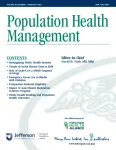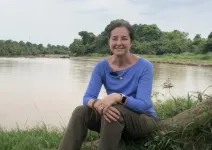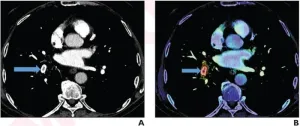(Press-News.org) Even after three years since the emergence of COVID-19, much remains unknown about how it causes severe disease, including the widespread organ damage beyond just the lungs. Increasingly, scientists are learning that organ dysfunction results from damage to the blood vessels, but why the virus causes this damage is unclear. Now a multidisciplinary team of Emory researchers has discovered what they believe is the key molecular pathway.
Results of their study, published today in Nature Communications, show that COVID-19 damages the cells lining the smallest blood vessels, choking off blood flow. These results could pave the way for new treatments to save lives at a time when hundreds of people are still dying from COVID-19 each day.
Doctors at Emory Healthcare started this study in the early days of the pandemic, to better understand drivers of severe COVID-19, and why adults develop severe disease more often than children. They used a so-called “multi-omics” approach, studying multiple data sets at once, to examine the biochemistry of blood from COVID patients and compared it to non-COVID patients, looking for clues.
“We were surprised by the little overlap between our adult and pediatric patients,” says Cheryl Maier, MD, PhD, assistant professor in the Department of Pathology and Laboratory Medicine, Emory University School of Medicine, and the study’s senior author. “Both groups had abnormalities related to clotting, but one unique pathway that stood out in the adults was related to vessel health and blood flow.” Maier says this finding was particularly interesting given their clinical observations that blood from patients severely ill with COVID-19 was unusually viscous: think maple syrup rather than water.
Maier worked with collaborator and co-senior author Wilbur Lam, professor in the Department of Pediatrics at Emory University and in the Wallace H. Coulter Department of Biomedical Engineering at Georgia Institute of Technology and Emory University, to create cutting-edge models of the smallest blood vessels, expected to be the most sensitive to altered blood flow, which allowed them to visualize how blood from COVID-19 patients versus other patients might be flowing in the human body. “Watching videos from these microfluidic devices is like seeing how COVID-19 might be affecting our blood vessels in real time,” Maier says. “These lab-made blood vessels are lined with real human vascular cells, called endothelial cells. You can put in plasma and red cells, any of the key components of blood and in different combinations, to watch how it behaves and see how the damage happens.”
Fibrinogen: A key culprit?
Since the earliest days of the pandemic, physicians have seen that a blood protein called fibrinogen was extremely elevated in patients with severe COVID-19. This protein is often elevated in other acute illnesses, but the elevations seen in the sickest COVID-19 were much higher. The body forms blood clots in part by cutting fibrinogen to form fibrin, a key component of clots, but fibrinogen itself is not thought to form clots and levels are not affected by anticlotting medications. But the Emory researchers found that in COVID-19 patients, the sky-high levels of fibrinogen cause red blood cells to clump together, altering blood flow and directly damaging the endothelial glycocalyx, a gelatinous protective layer lining the microvessels. “Fibrinogen is one of the top three most abundant proteins in plasma,” Maier says. “It’s been hiding in plain sight.”
When the researchers combined plasma from COVID-19 patients with red blood cells in lab-made blood vessels, they could visualize the cellular aggregation and quantify the destruction of the endothelial cell glycocalyx. “You have these large clusters of red cells that are all stuck together,” Maier says. “Normally this wouldn’t happen. Capillaries are so narrow that red blood cells must pass through single file. But in COVID, these aggregates stick together even under flow. It’s easy to imagine how this mechanically damages the microvasculature.”
Much of the new technology was developed by study co-first author Elizabeth Iffrig, MD, PHD, a critical care fellow in Emory’s Department of Medicine. “The foundation of what we did was looking at how red blood cells would form these big globules that would gunk up the microvascular system,” Iffrig says. “Our methodology let us look at this in a dynamic process, seeing what happens to these aggregates as we mimic a true physiologic state of blood flow instead of just suspending them in a fluid and measuring how big they are. The methodology allowed us to quantify all those things simultaneously.”
Taken together, these data suggest to Maier that the fibrinogen-induced red blood cell aggregation and resulting microvascular damage could be the major pathway by which COVID causes organ damage and even death. There’s presently no medications targeting high fibrinogen in the blood. However the team has done exploratory research using therapeutic plasma exchange: removing plasma with high fibrinogen from COVID-19 patients and replacing it with donor plasma that has normal fibrinogen levels. Maier thinks her team’s discovery is critical because it provides a target that might help save lives.
Additional key members of the research team include co-first author Sam Druzak, PhD, and co-senior author Eric Ortlund, PhD, professor in the Department of Biochemistry at Emory University.
END
Emory researchers discover key pathway for COVID organ damage in adults
2023-04-05
ELSE PRESS RELEASES FROM THIS DATE:
Population Health Management
2023-04-05
The COVID-19 pandemic has underscored the inequality in American health care systems, which consistently neglect the needs of underserved communities, leaving them without access to quality care. A commentary published in Population Health Management highlights the need for a transformational change in our health care systems to advance health equity and address structural racism and health disparities affecting wellbeing. Click here to read the article now.
Coauthors Dr. Jonathan B. Perlin, President ...
Teens who trust online information find it less stressful
2023-04-05
ITHACA, N.Y. -- Teens’ trust in the news they consume on social media – or lack of it – may be key to whether it supports or detracts from their well-being, according to Cornell-led psychology research.
Surveying nearly 170 adolescents and young adults from the U.S. and U.K. early in the pandemic, the researchers found that those more trusting of the COVID-19 information they saw on Facebook, Twitter and TikTok were more likely to feel it was empowering, while those less trusting were more likely to find it stressful.
The findings highlight the need for news literacy programs to help young people discern fact-based, trustworthy sources from misinformation ...
WCS names new President and CEO - Monica P. Medina
2023-04-05
The Wildlife Conservation Society (WCS) announced today that Monica P. Medina, the first diplomat in the U.S. designated to advocate for global biodiversity, has been named WCS President and CEO, effective June 1, 2023. Medina, current Assistant Secretary of State for Oceans, Environment, and Science; and Special Envoy for Biodiversity and Water Resources will serve until April 30, 2023, at the U.S. Department of State.
Medina ushered in a new era of environmental diplomacy as a foreign policy priority at the State Department. She will join WCS to lead its mission to save wildlife and wild places, harnessing the power of its four zoos, an aquarium, and its Global ...
IU researchers receive $8.6M NIH grant renewal to study alcohol use, binge drinking
2023-04-05
INDIANAPOLIS--A multi-disciplinary team of Indiana University researchers is focusing their efforts on a growing public health concern: binge and “high-intensity” drinking—extreme drinking behaviors that are increasingly prevalent among college-age adults.
The researchers, who are part of the Indiana Alcohol Research Center, recently received a five-year, $8.65 million grant renewal from the National Institute on Alcohol Abuse and Alcoholism to support this work.
Established in 1987, the Indiana Alcohol Research Center (IARC) is housed at IU School of Medicine and led by director David Kareken, PhD, a professor of ...
Looking beyond the horizon
2023-04-05
Texas Tech’s Thomas Maccarone has received a grant from the U.S. Air Force Office of Scientific Research to study possible impacts of one layer of the earth’s ionosphere upon radio communications.
Maccarone, a professor in the Department of Physics and Astronomy, said the project will have short- and long-term benefits and implications. The one-year grant is for just more than $500,000.
“We will use a set of dipole radio antennas to study what is called the sporadic E-layer of the ionosphere,” he said. “That is the short-term component the Air Force ...
AI cuts CT turnaround, wait times for positive pulmonary embolus
2023-04-05
Leesburg, VA, April 5, 2023—According to an accepted manuscript published in ARRS’ own American Journal of Roentgenology (AJR), a worklist reprioritization tool with artificial intelligence reduced both report turnaround time and wait time for pulmonary embolus-positive CT pulmonary angiography examinations.
“By assisting radiologists in providing rapid diagnoses, the artificial intelligence (AI) tool could potentially enable earlier interventions for acute pulmonary embolus (PE),” concluded lead researcher Kiran Batra, MD, from the department of radiology at University of Texas Southwestern Medical ...
Gone for good? California’s beetle-killed, carbon-storing pine forests may not come back
2023-04-05
LOS ALAMOS, N.M., April 4, 2023—Ponderosa pine forests in the Sierra Nevada that were wiped out by western pine beetles during the 2012-2015 megadrought won’t recover to pre-drought densities, reducing an important storehouse for atmospheric carbon.
“Forests store huge amounts of atmospheric carbon, so when western pine beetle infestations kill off millions of trees, that carbon dioxide goes back into the atmosphere,“ said Zachary Robbins, a postdoctoral at Los Alamos National Laboratory.
Robbins is corresponding author of a new paper published in the journal Frontiers in Environmental Science about carbon stored in living ponderosa pines in the ...
Dual quasars blaze bright at the center of merging galaxies
2023-04-05
Galaxies grow and evolve by merging with other galaxies, blending their billions of stars, triggering bursts of vigorous star formation, and often fueling their central supermassive black holes to produce luminous quasars that outshine the entire galaxy. Some of these mergers eventually go on to become massive elliptical galaxies that contain black holes that are many billions of times the mass of our Sun. Although astronomers have observed a veritable menagerie of merging galaxies with more than one quasar in our own cosmic neighborhood, more distant examples, seen when the Universe was only a quarter of its current age, are quite rare and ...
SFU research aids fight against treatment-resistant superbugs
2023-04-05
Researchers at Simon Fraser University are studying the genes of superbugs to aid the development of new and effective treatments for drug-resistant bacterial infections. Superbugs are characterized as infection-causing bacteria resistant to treatment with antibiotics.
“Antimicrobial resistance occurs when the disease-causing bacteria has ways to overcome the antibiotics that we use in treatment for infections,” says assistant professor Amy Lee, of SFU's Department of Molecular Biology and Biochemistry. The initiative is a collaboration between the Lee Lab and Brinkman Lab, which are working together as ...
Underground water could be the solution to green heating and cooling
2023-04-05
About 12% of the total global energy demand comes from heating and cooling homes and businesses. A new study suggests that using underground water to maintain comfortable temperatures could reduce consumption of natural gas and electricity in this sector by 40% in the U.S. The approach, called aquifer thermal energy storage (ATES), could also help prevent blackouts caused by high power demand during extreme weather events.
“We need storage to absorb the fluctuating energy from solar and wind, and most people are interested in batteries ...





